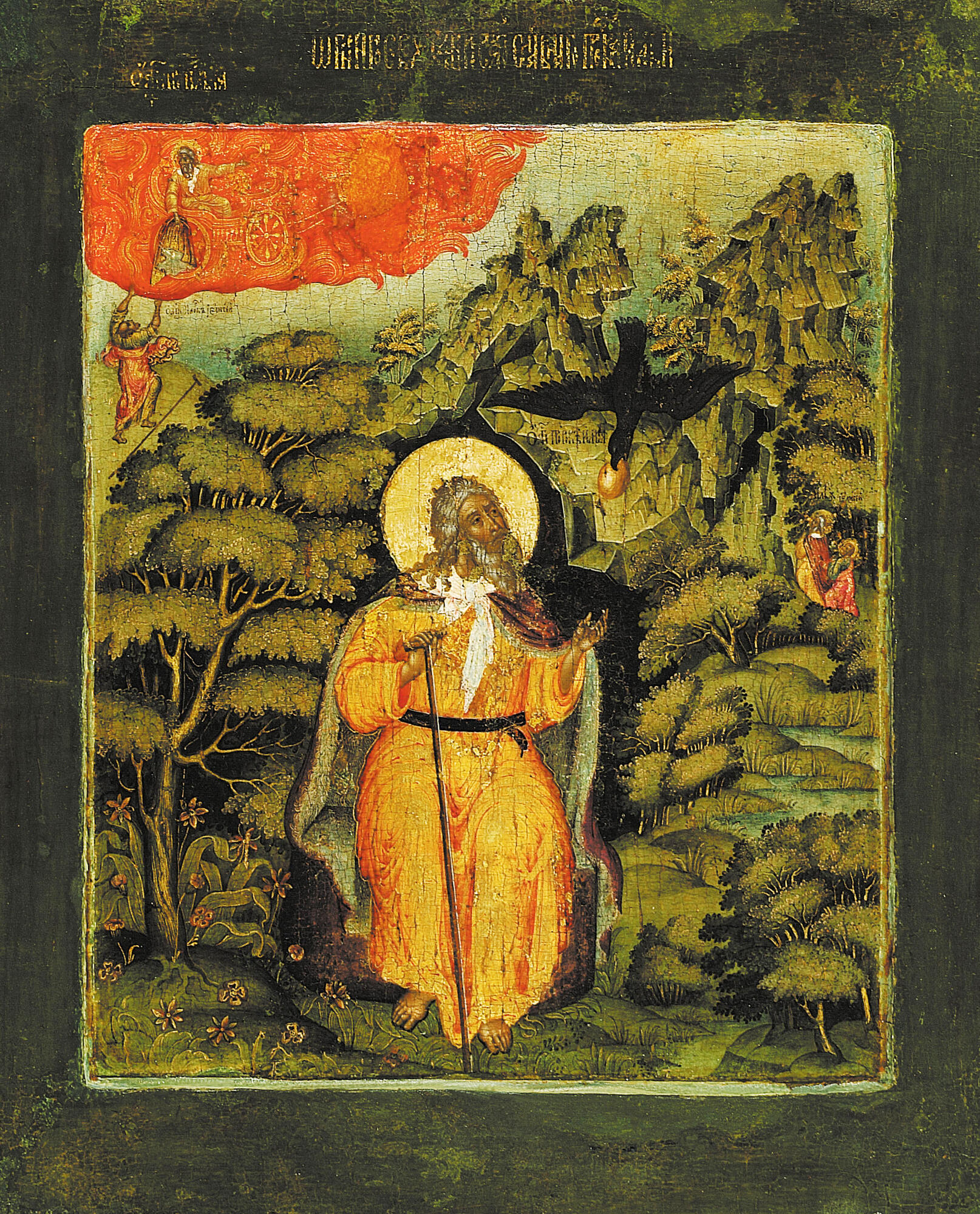The 17th-century Yaroslavl icon painting was characterized by the tendency to combine monumentalism and detailed elaboration at the same time. This was how a particular style of icons was developed: the main image was large and “monumental”, and around it, with no particular structure, the artist could add detailed border scenes, for example, depicting episodes from the saint’s life.
One of the first artists to work in this style and promote its development was Fyodor Zubov. “Prophet Elijah in the Desert” is one of the few icons which can be certainly attributed to him.
Fyodor Zubov began working in Veliky Ustyug and later became the head of the icon painters appointed by the Tsar to work at the Armory Chamber of the Moscow Kremlin. His icons are displayed in the churches of the Donskoy, and Novospassky Monastery, the Novodevichy Convent, and the Siya Monastery of St. Antonius. In 1659, Zubov was invited by the Skripin merchants to work on the icons for the Yaroslavl Church of Prophet Elijah, which nowadays form the local tier of the church’s iconostasis.
The artistic manner of Fyodor Zubov is characterized by elaborate details and intricate motifs, as well as ornamental patternwork typical of Veliky Ustyug art. The fine details of the miniature images are combined with vivid colors and Baroque-like characteristics, including dynamism, three-dimensionality, and emotionality. All of this contributes to the vividness and credibility of the images. The secondary scenes, including the conversation between Prophet Elijah and his successor Elisha, are also highly detailed.
Elijah is the most venerated Old Testament prophet in Christianity. He was a prophet in the time of King Ahab, reproved the idolatry established by him, as well as the cult of Asherah and Baal. Elijah became known for performing many miracles. After winning the argument with the prophets of Baal (by lighting an altar with his prayer while the prophets were unable to do that), Elijah was forced to go to the desert where, according to the Gospels, he had food brought to him by angels and ravens. This story is depicted in this icon. Having returned to Israel, the prophet finally suppressed Ahab and took Elisha as a disciple.
In the New Testament, John the Baptist is associated with Elijah.
One of the first artists to work in this style and promote its development was Fyodor Zubov. “Prophet Elijah in the Desert” is one of the few icons which can be certainly attributed to him.
Fyodor Zubov began working in Veliky Ustyug and later became the head of the icon painters appointed by the Tsar to work at the Armory Chamber of the Moscow Kremlin. His icons are displayed in the churches of the Donskoy, and Novospassky Monastery, the Novodevichy Convent, and the Siya Monastery of St. Antonius. In 1659, Zubov was invited by the Skripin merchants to work on the icons for the Yaroslavl Church of Prophet Elijah, which nowadays form the local tier of the church’s iconostasis.
The artistic manner of Fyodor Zubov is characterized by elaborate details and intricate motifs, as well as ornamental patternwork typical of Veliky Ustyug art. The fine details of the miniature images are combined with vivid colors and Baroque-like characteristics, including dynamism, three-dimensionality, and emotionality. All of this contributes to the vividness and credibility of the images. The secondary scenes, including the conversation between Prophet Elijah and his successor Elisha, are also highly detailed.
Elijah is the most venerated Old Testament prophet in Christianity. He was a prophet in the time of King Ahab, reproved the idolatry established by him, as well as the cult of Asherah and Baal. Elijah became known for performing many miracles. After winning the argument with the prophets of Baal (by lighting an altar with his prayer while the prophets were unable to do that), Elijah was forced to go to the desert where, according to the Gospels, he had food brought to him by angels and ravens. This story is depicted in this icon. Having returned to Israel, the prophet finally suppressed Ahab and took Elisha as a disciple.
In the New Testament, John the Baptist is associated with Elijah.



